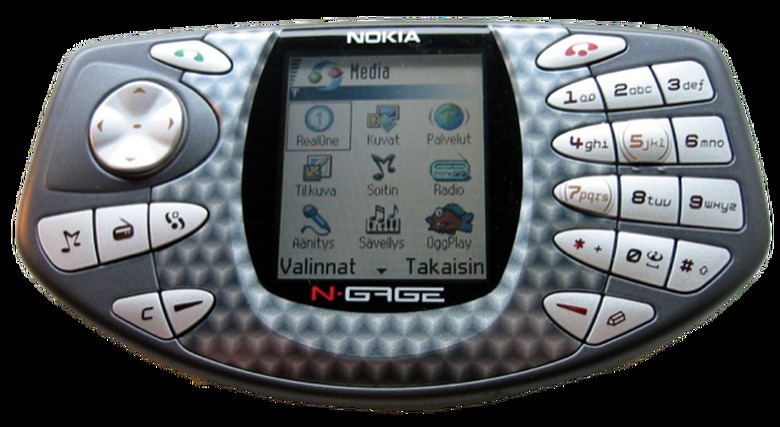The 10 Worst Video Game Consoles Of All Time
In the relatively brief history of video game consoles, we have seen many more failures than successes. Consoles have failed for various reasons, from poor game selection to being overpriced. However, some fail because they were simply not very good. The most recent console generation has brought us a couple of solid options in the PlayStation 4 and Xbox One, but the Wii U's struggles have also given us a reason to reflect — it's not a bad console at all, but sales have been very slow thus far. So with that, let's take a look at the 10 worst gaming consoles of all time.
Sega 32X, 1994
The 32X was a bad idea from the start. Released in 1994, it was meant as a an add-on to the Sega Genesis. However, with the Sega Saturn released the following year, developers were never interested. Only 40 games were ever made for the 32X. While it boasted of having 32-bit graphics, few developers took advantage of this. In the end, only 650,000 units were ever sold.
Nokia N-Gage, 2003
Nokia had the actually forward-thinking idea of combining gaming and mobile phones. Unfortunately, they executed it quite terribly. Trying to be both a gaming device and a phone resulted in an awkward combination of the number pad with gaming controls. Released in 2003, the N-Gage was meant to compete with the Game Boy Advance. It didn't quite do this, selling only 5,000 in the first two months and being outsold by the Game Boy Advance 100 to 1. Surprisingly, the N-Gage spawned a successor in the N-Gage QD and wasn't completely discontinued until 2010. On the plus side, without the N-Gage, there would be no sidetalkin'.
Tiger Telematics Gizmondo, 2005
As bad as the N-Gage was, Tiger felt the need to compete with it. Released in 2005 in Britain to much fanfare, the Gizmondo was a spectacular failure. Overpriced at $229, Tiger only ever sold 25,000 Gizmondo units. Less than a year after launch, Tiger discontinued the Gizmondo and declared bankruptcy.
Worlds of Wonder Action Max, 1987
The Action Max attempted to create video games with VHS tapes. Users would use the controller, which was a light gun, to shoot at moving targets on screen. If you hit the target, you'd get points. Aside from that, there wasn't much else you could do. Unsurprisingly, only five games were ever released for the Action Max.
Apple Bandai Pippin, 1996
Not unlike Microsoft with the Xbox One, Apple attempted to create a multimedia platform with Pippin. Licensed to third-parties, only Bandai ever produced a console for them. At $600 and poorly marketed, the Pippin struggled to attract game developers, and unsurprisingly, Steve Jobs killed the Pippin platform when he returned to Apple in 1997.
Philips CD-i, 1991
In 1991, Philips tried to create a multimedia device based around the CD. However, at $700 the CD-i failed to catch on. It failed to attract game developers, and in a deal with Nintendo, four of the worst video games ever were introduced to the CD-i: Link: The Faces of Evil, Zelda: The Wand of Gamelon, Zelda's Adventure, and Hotel Mario. In addition, it featured one of the worst controller designs ever.
Tiger Game.com, 1997
Another poorly designed handheld gaming device, the Game.com (pronounced game com, not game dot com) hoped to capitalize on the Internet hype of the late '90s. Boasting Internet connectivity, none of Game.com's games actually used the Internet. All it could do was upload high scores and browse a text-only version of the Web. And you could only do this if you bought the additional Internet cartridge. While it featured a touchscreen and some PDA functions, it sold poorly and was discontinued in 2000.
3DO Interactive Multiplayer, 1993
The brainchild of EA founder Trip Hawkins, the 3DO was introduced in 1993 as yet another CD-based multimedia platform. However, with a price of $600, few consumers understood why they needed a CD-based multimedia platform. The 3DO was discontinued in 1996.
RCA Studio II, 1977
The early days of video gaming saw some interesting designs for video game consoles. The Studio II has to be one of the more bizarre ones. While it was one of the first consoles to use ROM cartridges, it lacked color graphics and featured perhaps the worst controller design in video game history. How bad? The controllers were number pads. When many consoles featured a joystick or at least a directional key pad, this controller stood out for its terrible design.
Nintendo Virtual Boy, 1995
With the Virtual Boy, Nintendo attempted to a make a virtual reality video game console. While futuristic in theory, in practice it was a pain to use. Literally. People complained of sore necks and eye strain from using the Virtual Boy. And the virtual reality technology was extremely limited. The games were only in one color—a jarring red—and weren't even truly 3D. Released in 1995, the Virtual Boy was discontinued less than a year later.
